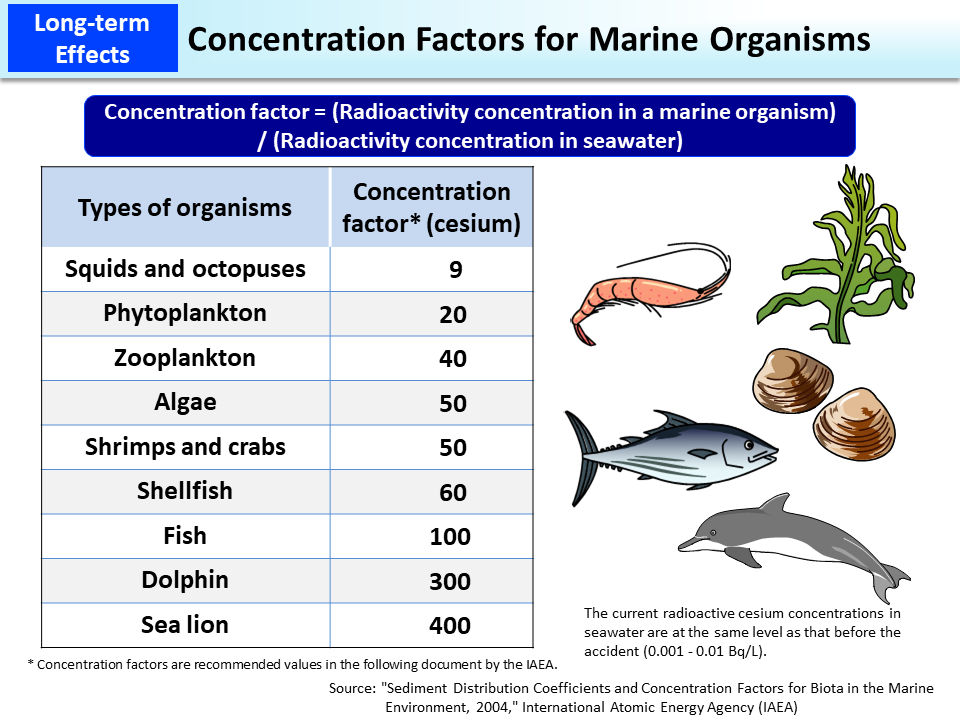Concentration Factors for Marine Organisms
The concentration factor is the ratio between the radioactivity concentration in a marine organism and the radioactivity concentration in seawater, assuming that the relevant marine organism is placed in seawater at a certain radioactivity concentration for a long period. This indicates the level of accumulation of radioactive materials in the relevant marine organism.
Comparing concentration factors of cesium, the concentration factor is higher for fish than plankton and is further higher for large mammals that eat fish.
Cesium also bioaccumulates, but is not continuously accumulated in organisms unlike mercury or cadmium. Instead, radioactive cesium concentrations in organisms are considered to decline in accordance with the decline in radioactive cesium concentrations in seawater.
Concentration factors indicated in the above figure are those recommended by the International Atomic Energy Agency (IAEA). At present, radioactive cesium concentrations in seawater have declined to almost the same level as that before the accident (0.001 - 0.01 Bq/L), except within the port near Tokyo Electric Power Company (TEPCO)'s Fukushima Daiichi NPS (p.48 of Vol. 2, “Changes in Radioactivity Concentrations in Seawater”).
- Included in this reference material on March 31, 2013
- Updated on March 31, 2015

